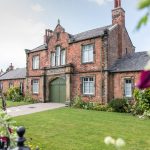Elizabeth Mudd lived in a house on Allhallowgate in Ripon with her four children. Her husband was born in the area, but left home to join the Royal Engineers in London, before the two married in 1873.
The family was moved around often by the army. Her oldest son, William, was born in Medway Kent in 1874, his brother Thomas was born in Gosport in 1875 and Jesse John was born 1877 in Devon. Elizabeth found all this moving around difficult, with poor houses and very little money, so the family settled in Yorkshire and the youngest child, Elizabeth Hannas, was born in Pateley Bridge.
The children’s father remained in the army away from the family. Unfortunately, things went from bad to worse for them, with no money for food or rent, and so they ended up Ripon Union Workhouse. William would have been just five or six at the time.
Elizabeth Mudd was determined that they would manage, so the family left the workhouse, but still she had to go back to ask for money for food, clothes and boots. She worked cleaning and sewing to earn some money, but it was very hard. By the age of 12, William was able help out, selling newspapers on the market square. However, he still made sure to get to the Cathedral School on time, with the aim of becoming a shoemaking apprentice. This job didn’t pay a lot of money at first, but it taught William a trade.
Mothering Sunday was an important day in the church calendar. Elizabeth worked hard to make sure her children could get educated and then get jobs to earn money. Her children might have risen early to go out into the countryside to pick some wild flowers, to say thank you to her for working so hard for them, before the whole family went to church.
Research by Judy Jones, December 2019.
 Workhouse Museum
Workhouse Museum